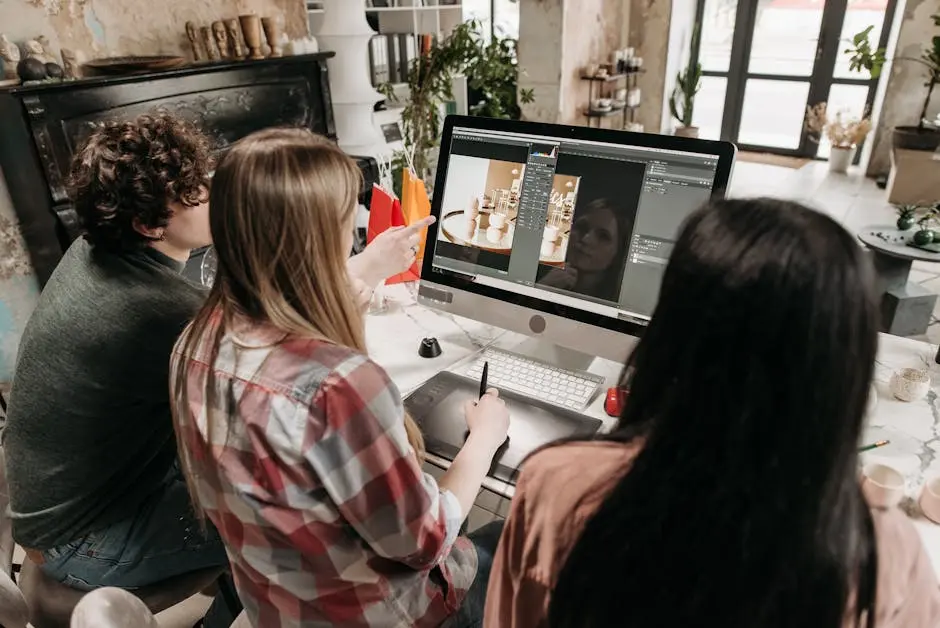How Can Project Management Software Benefit Graphic Designers?

In today’s fast-paced creative industry, graphic designers often juggle multiple projects with tight deadlines. However, managing and organizing these projects can become overwhelming. This is where project management software comes in handy. Let's explore how such tools can streamline workflows and boost productivity for graphic designers.
Streamlining Workflows with Task Management
Project management software allows graphic designers to break down projects into manageable tasks. This helps in organizing work efficiently and ensuring nothing falls through the cracks.
For graphic designers, each project can encompass multiple interrelated tasks, from initial concept sketches to final detailed mockups. Project management software supports them in allocating specific tasks within a project, thus simplifying the overall workload. By employing software that allows for detailed task allocation, designers can map out each step of their project, ensuring every aspect receives the attention it requires. This obviates the conventional approach where designers might inadvertently overlook a crucial element amid the hectic pace of multiple deadline-driven projects.
Moreover, breaking tasks into smaller, more manageable components can help alleviate some of the stress associated with looming deadlines, as it creates a structured roadmap showcasing how to progress from start to completion. This meticulous method reduces the likelihood of errors and fosters a more streamlined, effective design process.
Improving Collaboration with Team Communication Tools
These tools provide platforms for seamless communication, enabling designers to collaborate with team members and clients without the clutter of endless email threads.
In the realm of graphic design, collaboration is key. Whether working alongside a fellow designer, web developer, or project manager, seamless communication is fundamental. Innovative project management platforms integrate messaging and discussion boards, allowing designers to share ideas in real time. Unlike traditional email, these tools offer centralized communication hubs that keep all pertinent information in one easily accessible place. This means designers can ask questions, receive feedback, and make necessary adjustments without the cumbersome back-and-forth of email chains – boosting productivity and maintaining clear communication lines.
The collaborative advantages extend to client interactions as well, offering a streamlined way to convey design updates and revisions, ensuring that both designers and clients remain aligned on project goals and progression.
Time Tracking for Better Productivity
With time-tracking features, designers can monitor how much time they spend on each task, helping them to analyze productivity and make necessary adjustments to improve efficiency.
For designers, it’s essential to understand where time is being best spent or lost in a project. Time-tracking features within project management software can illuminate usage patterns and allow for in-depth analysis of work habits. For example, if a designer notices excessive time allocated to certain routine tasks, they might consider adjusting priorities or editor tools. This comprehension permits designers to better allocate their hours towards the most impactful tasks such as ideation and design creation, rather than administrative duties.
In this way, time-tracking features don’t simply enhance productivity; they empower designers to reclaim their most valuable asset – their time.
Meeting Deadlines with Calendar Integration
Project management software often includes calendar integration, which aids in planning and scheduling tasks, ensuring deadlines are met without last-minute rushes.
Calendar integration is more than scheduling – it's about remaining agile and flexible in the face of changes. By setting reminders and integrating dependencies between tasks, designers can foresee potential bottlenecks and bypass them efficiently. These tools simplify aligning deliverables with client expectations, curbing stress through proactive, rather than reactive, project management.
Such features allow for visual overviews of project timelines, ensuring that each milestone is hit promptly while offering scope for revisions as needed. Ultimately, calendar tools empower designers to stay ahead of deadlines, freeing them to be more creative in their designs without the looming threat of tight schedules.
Enhancing File Organization and Accessibility
These platforms offer robust file management systems where designers can store and access their work easily, keeping the creative assets well-organized and readily available.
A central location for file storage is vital for organizing project assets. Cloud-based solutions offered within project management software ensure that designers can retrieve and update files from anywhere, facilitating seamless transitions between work environments. Particularly for remote teams or freelancers, this ease of access negates the constant hassle of searching for misplaced files. Furthermore, version control features within these platforms mean that designers won’t struggle with outdated versions or conflicting changes – every team member accesses the most current iteration of a file.
Benefits of file organization extend beyond efficiency. Keeping assets organized promotes more coherent and consistent projects where design elements flow together harmoniously, strengthening the overall design process and output.
Harnessing the Power of Project Management Software for Graphic Design
Incorporating project management software into a graphic designer's workflow can be transformative. Not only does it enhance organization and efficiency, but it also fosters better collaboration and timely project delivery. By integrating the right tools, designers can focus more on their creative tasks and less on logistical hassles.
Roam: Run your design business, not just your projects. Intuitive business management tools for graphic designers.


.png)





